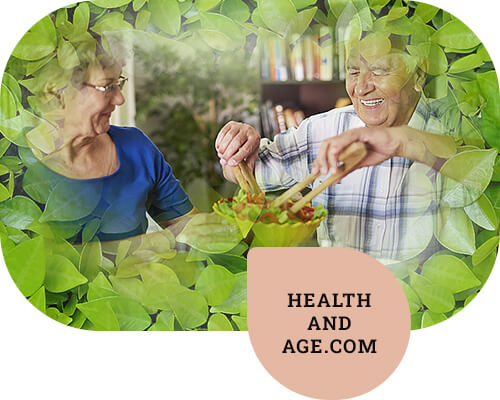According to centuries of observation, the life expectancy of earthlings has been steadily increasing. While at the beginning of the last century the average life expectancy was 35-40 years and 50-year-olds were considered to be deep old men, by the end of the 20th century the average life expectancy had increased to 70-75 years.
According to the age classification of the World Health Organization, biological age has now changed significantly. From 25 to 44 years is young age; 44 to 60 years is middle age; 60 to 75 years is old age; 75 to 90 years is old age; and 90 years or older is long-lived. And in many developed countries there has been an increase in old age, old age and long-livers.

Scientists do not agree on the reasons for such a dramatic increase in life expectancy. Some attribute it to the development of civilization: people moved from cave life to warm homes, provided themselves with sufficient food, medical care, etc. Others attribute it to the evolutionary development of the human species...
Whatever the case may be, nutrition has an important influence on the vital activity of humans of any age, and even more so of the elderly.
Changes occurring in the body of elderly people
The process of aging is manifested by the natural development of changes in the structure and function of various organs, including the organs of the digestive system. The most pronounced changes are observed in the oral cavity:
- Preserved teeth have a yellowish tint and varying degrees of erasure.
- The volume of the oral cavity and salivary glands decreases, filiform papillae of the tongue disappear, mimic and masticatory muscles and bones of the facial skull atrophy.
- Saliva production decreases with age, so dry mouth, cracked lips and tongue are quite common in elderly and old people.
- As a person ages, the esophagus lengthens and curves slightly due to increased kyphosis of the thoracic spine, expansion of the aortic arch.
- The frequency of reflux (backflow of stomach contents into the esophagus) increases with age, which is associated with a decrease in the tone of the esophageal sphincter muscle.
- The overall length of the intestine increases, and lengthening of individual sections of the large intestine is more often observed.
- Intestinal microflora changes: the number of bacteria of putrefactive group increases, the number of lactic acid bacteria decreases, which promotes growth of endotoxin production and eventually disturbance of the functional state of intestine and development of pathological process.
- There is a decrease in the weight of the liver.
- Gallbladder increases in volume due to lengthening, increasing tone of gallbladder wall musculature, which also contributes to bile stasis. This factor in combination with increased secretion of cholesterol creates preconditions for development of cholelithiasis in elderly and old people.
- Atrophic changes of pancreas develop already after 40 years old.
Improper nutrition in old age often leads to such serious illnesses as chronic gastritis, peptic ulcer disease, chronic hepatitis, chronic pancreatitis, chronic colitis, diabetes mellitus and others.
To avoid such diseases it is necessary: to strictly observe the principles of nutrition, satisfy the body's need for nutrients, adhere to a dietary regime.
Observance of the principles of nutrition
When organizing nutrition for the elderly, it is necessary to take into account the decreased capacity of the digestive system first of all. In this regard, the main requirements for the diet of the elderly are:
- moderation, i.e. some limitation of nutrition in quantitative terms.
- ensuring a high biological fullness of nutrition by including sufficient amounts of vitamins, biomicroelements, phospholipids, polyunsaturated fatty acids, essential amino acids, etc.
- enrichment of the diet with natural anti-sclerotic substances contained in significant quantities in some food products.

Nutritional requirements
Satisfying the nutritional needs of the aging body is a guarantee of protection against diseases. How does this need manifest itself?
- Need for protein. A decrease in general performance in old age and often the cessation of vigorous physical work is grounds for reducing protein intake. However, in the elderly there is still a need for regeneration of worn out, deteriorating cells, which requires protein (the greater the greater the wear and tear on the tissues).
- Need for fats. Fats in the diet of the elderly should be limited. It has been found that heavy consumption of fat is associated with the development of atherosclerotic process. Along with butter must be used vegetable oil. It is in the amount of 20-25 grams per day to ensure adequate intake of those substances that are essential in old age (polyunsaturated fatty acids, etc.).
- Need for carbohydrates. In the generally accepted formula for a balanced diet, the amount of carbohydrates is, on average, four times the amount of protein. This ratio of protein to carbohydrates is acceptable for the elderly only if they have an active, mobile lifestyle. At low physical activity, the amount of carbohydrates should be reduced. Whole grain products (rye and wheat flour bread, etc.), as well as potatoes and other vegetables are desirable sources of carbohydrates. Foods containing a lot of fiber and pectin should also be used. Fiber promotes the removal of cholesterol from the body.
Of particular value are raw fruits and vegetables, which have the most active biological effect.
- Vitamin requirements. Vitamins, thanks to their properties, can inhibit to some extent the aging process. Of particular importance are vitamins that have a normalizing effect on the vascular and nervous systems, as well as vitamins involved in reactions associated with the inhibition of the development of sclerotic process, these are vitamins: C, P, B12, B6.
- The need for minerals. The balance of minerals in the diet of the elderly is necessary to a lesser extent than in adulthood and middle age.
Of particular importance in the mineral metabolism of the elderly is calcium. Its excess leads to deposition of salts in the walls of blood vessels, joints, cartilage and other tissues.
Nowadays the generally accepted norm of calcium for the elderly is the one for adults, i.e. 800 mg per day.
- An important mineral element in the elderly is magnesium. It has antispasmodic and vasodilator effect, stimulates intestinal peristalsis and promotes bile excretion. The effect of magnesium in reducing blood cholesterol has been found. With a lack of magnesium increases the calcium content in the walls of blood vessels. The main sources of magnesium in the human diet are cereals and legumes. Daily requirement of magnesium is 400 mg.
- Potassium also plays a major role in old age and old age. It increases the body's excretion of water and sodium chloride. In addition, potassium enhances heart contractions. All foods in the diet are involved in the daily supply of potassium. However, in old age the most beneficial source of potassium are raisins, apricots, and potatoes.
- For the elderly, it is desirable to increase the alkaline orientation of the diet by increasing the consumption of milk and dairy products, potatoes, vegetables and fruits.
- Iodine deficiency is typical for Belarus as a whole. Therefore, iodine intake into the aging body is important. It is necessary to prevent iodine deficiency by applying iodized salt or consuming a daily dose of potassium iodide - 150 mcg.
Nutrition regimen
In old age, diet is especially important for the prevention of aging of the body. The basic principles of the elderly diet are:
- eating strictly at the same time;
- limiting the intake of large amounts of food;
- the elimination of long gaps between meals.
Four meals a day is recommended. A five-meal-a-day regimen can be established. This is most reasonable in old age, when food should be taken in smaller portions and more often than usual. A four-meal plan distributes the food ration as follows: 25% for the first breakfast, 15% for the second breakfast, 35% for lunch and 25% for dinner.
A sample daily ration for the elderly
First breakfast: omelette - 100g, dairy oatmeal - 150g, tea with milk - 150/50g.
Second breakfast: fresh fruit or berries - 150g., baked apple - 130g.
Lunch: carrot salad with sour cream - 100g., vegetarian cabbage soup (with vegetable oil) - 250g., boiled fish baked with mashed potatoes -85/150g.
Afternoon snack: rosehip decoction - 150 ml, vegetable or fruit juice - 200 ml.
Dinner: cottage cheese pudding - 100g., stuffed cabbage rolls with vegetables (in vegetable oil) - 150g.
For the night: Kefir - 200 ml.
All day: Bread - 250-300g., sugar - 30g., butter - 10g.
What is the secret of active longevity?
According to geneticists, the biological age of man is "wound up" at 150 years.
What should not and what should one do to live at least 100 years?
Laziness and overeating are the most dangerous vices that shorten life.
Anger, envy, discouragement, longing, and intolerance are the main causes that lead to disease and shorten life.
What helps a person live a long and happy life?
A strong attachment to freedom and independence. Always remain internally free and independent.
- Adhere to the principles of a healthy lifestyle.
- Adhere to a regimen of work, active rest and rational nutrition.
- If you want to stay healthy and live longer, move.
- Simple physical exercises and walks are necessary for an elderly person more than food.
- Moderate and feasible physical activity can give a fivefold increase in the production of endorphins - the hormone of happiness.
- Giving up bad habits (smoking, drinking alcoholic beverages, etc.).
- Active brain work to preserve memory and mental clarity. Do not let your brain become senile: continue working professionally, helping young colleagues, writing articles, books, learning foreign languages, doing crossword puzzles, memorizing poems, etc.
- Monitor your heart rate and blood pressure. The normal heart rate is 60-70 beats per minute. Blood pressure at age 60 and over should not exceed 160 at 80-90 mm Hg.
One must always remember:
Only a happy person can live long, and it depends on himself!


